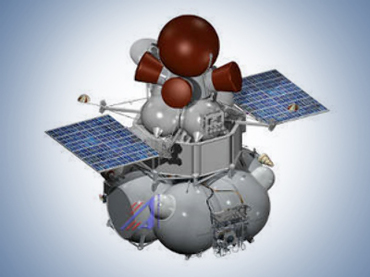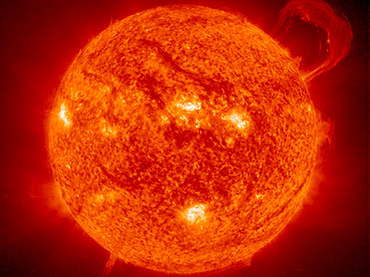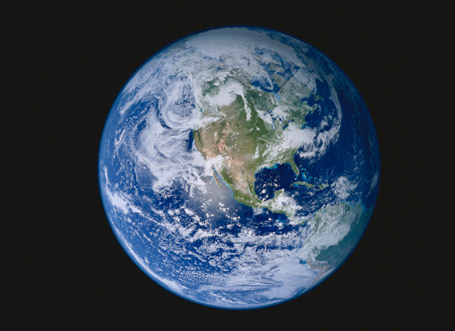Posted by Ram Kumar Shrestha on July 29, 2011
Labels
- Article (43)
- Interview (4)
- Kapilvastu Day Movement (6)
- Miscellaneous (2)
- News (195)
- Own Pen (41)
- Science and Technology (7)
- Visual (2)
- अन्तरबार्ता (2)
- कथा/लघु कथा (1)
- गीत/कबिता (17)
- नियात्रा (2)
- लेख/निबन्ध/बिचार (37)
- समाचार (17)
Saturday, July 30, 2011
बुद्धको जीवनी एनिमेसन फिल्ममा
Posted by Ram Kumar Shrestha on July 29, 2011
Rate This
सन्तोष रिमाल, काठमाडौं, साउन १३- ’म हिन्दुस्तानी हुँ। तर, भारतले बुद्ध आफ्नो देशमा जन्मेको हल्ला फैलाउँदा साह्रै झोक चल्छ,’ बुद्धको जीवनकथा झल्काउने एनिमेटेड फिल्म ‘गौतम बुद्ध’ बनाउन व्यस्त निर्देशक तुलसी घिमिरे यसलाई बुद्धबारे धेरै भ्रम चिर्ने फिल्म दाबी गरे।
झल्काउने एनिमेटेड फिल्म ‘गौतम बुद्ध’ बनाउन व्यस्त निर्देशक तुलसी घिमिरे यसलाई बुद्धबारे धेरै भ्रम चिर्ने फिल्म दाबी गरे।
 झल्काउने एनिमेटेड फिल्म ‘गौतम बुद्ध’ बनाउन व्यस्त निर्देशक तुलसी घिमिरे यसलाई बुद्धबारे धेरै भ्रम चिर्ने फिल्म दाबी गरे।
झल्काउने एनिमेटेड फिल्म ‘गौतम बुद्ध’ बनाउन व्यस्त निर्देशक तुलसी घिमिरे यसलाई बुद्धबारे धेरै भ्रम चिर्ने फिल्म दाबी गरे।‘हामीलाई धार्मिक र दार्शनिक पक्षसँग त्यति धेरै सरोकार छैन। तर, अकाट्य कुरा के हो भने गौतम बुद्ध कपिलवस्तुको लुम्बिनीमा जन्मिएका हुन्। जुन नेपालमा पर्छ,’ भारतीय फिल्मकर्मीले समेत बेलाबखत बुद्धको जन्मस्थलको विषयमा भ्रामक प्रचार गरिरहेको चर्चा गर्दै त्यसलाई चिर्ने अठोट गरेका छन् उनले। बुद्धको जीवनकथाका थुप्रै रोचक तथ्य फिल्मले उजागर गर्ने जिकिर समेत छ उनको।
कपिलवस्तुका राजकुमार सिद्धार्थ गौतमले गृहत्यागको बाटो रोजेको कथा उनको फिल्मले भन्नेछ। ‘विभिन्न श्रोतव्यक्तिको भनाइ र अनुसन्धानका आधारमा केही नयाँ र अभिरुचिपूर्ण तथ्य देखाउन खोजेका छौं र त्यसलाई तर्कसंगत ढंगले पुष्टि गर्ने प्रयास पनि,’ थरिथरिका मिथकको जालोबाट बुद्धको स्पष्ट जीवनी देखाउने काम उनलाई निकै चुनौतीपूर्ण लागेको छ।
Russian solar probe to predict Earthly cataclysms
Posted by Ram Kumar Shrestha on July 29, 2011
Rate This
Some scientists believe bursts of solar activity cause natural disasters on our planet, but until now the star has been too
difficult to reach or explore in any detail. Some Russian researchers think they have the solution.
Volcanic eruptions, earthquakes, tsunamis – apocalyptic pictures are becoming an ordinary part of news bulletins across the globe. And scientists are not giving out reassuring forecasts.
“Unfortunately, we’re expecting more severe cataclysms which may lead to large-scale human losses and destruction,” says Baku-based Professor Elchin Kakhalilov of the Global Network for the Forecasting of Earthquakes.“I’m talking about even a possible shift of the centers of our entire civilization.”
The change in the Earth’s seismic activity coincides with the rise of activity on the sun. Scientists have been witnessing gigantic bursts of plasma on its surface and say they are affecting our planet, even though it is over 90 million miles away.
Each burst sends billions of particles into space which impacts the Earth’s magnetic field. This may trigger some of the processes going on deep bellow its surface, leading to earthquakes and volcanic eruptions.
Scientists predict solar activity will increase and say in the next few years, large-scale disruptions of electronic equipment, radio transmissions, computer failures and massive black-outs could become parts of everyday life.
The sun is currently monitored either by stations on Earth or in orbit. But sending a probe four times closer to the star would be far more helpful. And it may not be science fiction much longer, thanks to a project currently being developed by the Russian Academy of Sciences (RAS).
Russia eyes scientific mission to Venus
Posted by Ram Kumar Shrestha on July 29, 2011
Rate This
A leading Russian firm specializing in automated probes is preparing a mission to Venus. Planned for 2016, its mission is to study the planet’s turbulent atmosphere and surface, and find out why it has no water.
to study the planet’s turbulent atmosphere and surface, and find out why it has no water.
 to study the planet’s turbulent atmosphere and surface, and find out why it has no water.
to study the planet’s turbulent atmosphere and surface, and find out why it has no water.The preparation work on the spacecraft has started even though the contract for it has not yet been signed, told head and chief designer of the Lavochkin construction bureau Viktor Kharnov.
The Venera-D (Venus-D) station is to be launched in December 2016 and delivered to Venusian orbit in May 2017. It will be carried by a heavy Proton-M or Angara-A5 rocket.
The orbiting craft will launch a lander module and two atmospheric probes, which will gather samples of the atmosphere at altitudes of 55-60 km and 45-50 km. The orbiter will have scientific instruments of its own and will also relay data from the probes and the lander to Earth.
Beyond the Dalai Lama: Profiles of Four Tibetan Lamas-in-Exile
Posted by Ram Kumar Shrestha on July 29, 2011
Rate This
This is a guest post by Elizabeth Dias, a TIME contributor based in Washington.
When the Dalai Lama came to Washington this month, he wasn’t alone. Accompanying the spiritual leader of Tibetans-in-exile were a group of other leading rinpoches, or reincarnate lamas and teachers. These Tibetan clerics, or “precious jewels” as the term rinpoche means, often keep their national and international influences low profile. Kate Saunders, director of communications for the International Campaign for Tibet, says this in part because the “one thing virtually all Tibetans share is loyalty to the Dalai Lama.” Yet as His Holiness nears the twilight of his life, attention has already shifted to those who are shouldering the mantle of his spiritual leadership overseas — the Dalai Lama already ceded his political powers earlier this year. TIME caught up with four of these leaders to hear their own stories of Tibetan leadership.
Gomo Tulku Rinpoche, 22
A “Recording-Artist Rinpoche” may seem unlikely, but then you have Gomo Tulku Rinpoche. He hails from the same Gelugpa lineage as the Dalai Lama, who recognized Gomo Tulku’s reincarnation at age three.
While his previous incarnation reportedly enjoyed ritual dance and music, Gomo Tulku takes this passion to an entirely new level. Three years ago he quit the Sera Je Monastery in south India to pursue a music career in Italy. That was not an easy decision. Since age 7 he’d been trained to become a teaching monk. Without telling anyone, “I booked the tickets myself and I left,” he recalls. “Being a lama, if that is my role, as a teacher, then at least I need to know what life is.”
Today he has created his own sound, one that trades traditional chant for a fusion of contemporary hip-hop and R&B with some slash and pop, and on July 28, he is set to release his first single, “Photograph.” Gomo Tulku works with the Foundation for the Preservation of the Mahayana Tradition and its 160 centers worldwide even as he is busy “spitting lines.” Here’s the line he spit for TIME: “I’m constantly dazed and confused, I never cease to be amazed by the views.” It’s an impromptu composition, but nevertheless it reveals his honest approach of self-discovery. As he describes it, he is trying “to find myself in a different way and experience life and share it with my people” and to “have that direct interaction instead of being on the throne. I want to come down with you guys, just chill with you guys and talk.”
World Population Predicted to Hit 7 Billion This Year
Posted by Ram Kumar Shrestha on July 30, 2011
Rate This
By: MEGAN GIBSON
If this keeps up, things are going to get crowded.
A new study shows that the earth’s population will hit 7 billion in 2011, which is double what it was in the 1960s,
according to Discovery News. What’s more, researchers predict that another 2.3 billion people will be added to our planet over the next 39 years. In case you were wondering, that’s a lot of people in not a lot of time.
(PHOTOS: Garbage Wars in Naples)
Worryingly, the study adds:
SINO-NEPAL RELATIONS: ECONOMIC AGENDA FOR A 21ST CENTURY STRATEGIC PARTNERSHIP
Posted by Ram Kumar Shrestha on July 29, 2011
Rate This
[China is an opportunity for Nepal and South Asia –at least the Hindu Kush Himalayan regions of it - because, with China’s new economic and development policy, the centre of gravity of its economic growth has and will move towards the hinterland of South West China and Central Asia from its currently dominant eastern seaboard. In the process, unfolding right before our eyes, unimagined opportunities with many new Silk Routes. It may be hypothesized that the ‘centre’ of Asia, henceforth, shall be in the regions of Tibet, Qinghai, Guansu, Sichuan, Kunming and Xianjian, which are all in the immediate neighbourhood of South and Central Asia.]
By Madhukar Shumshere J B Rana
| Journalist Kanak Mani Dixit has just written that ‘Between Sycophancy and Adventurism’ (Republica; July 27- 28,2011) that “China’s diplomacy is meant to serve China and not Nepal” , as if Indian diplomacy or US diplomacy or Norwegian diplomacy is to serve Nepal and not their own national interests? Perhaps, he’s been smitten by the once-upon-a-time Bush-Blair’s airy- fairy ‘ethical diplomacy’ that saw nations as ‘good’ and ‘evil’ albeit with Christian lenses. |
The fundamental question we, as Nepalese, must ask ourselves is this: is China a threat or an opportunity for Nepal? This author believes that it’s an opportunity not just for Nepal but all of South Asia. And that is why all South Asian nations welcomed it into the SAARC as Observer—albeit India reluctantly: since, other than the George Fernandez who sees China as an undiluted threat, India is yet ambivalent. Being still undecided as to what, where and how much cooperation, coordination, competition, conflict or just communication for confidence building?
Asia has emerged as the new geo political and geo-economical power house of the globe after around 300 years of imperialism and colonialism with total marginalization of the once flourishing Asian economies; exploited and left to forcibly trade with the metropolitan country only as slaves.
This structural change has been made possible, firstly, by the post-WW II rise of Japan from the ashes with its spellbinding economic miracle and its judicious adaptation of tradition with modernity during 1945-80. Japan laid the seeds of Asian geo-political and geo economic independence and self reliance: and implanted geo-psychological self confidence by virtue of its modernization found on its own civilization and cultural ethos.
Thereafter, the four modernization drives of China, since the late 1970s to this day, rendered China as the world’s factory for manufacturing of mass based, high quality consumer goods with intermediate technology maximizing economies of scale with economies of scope. And, since the 1990s, with the initiative of Prime Minister P V Narasimha Rao in India, Asia’s renaissance is irreversible as India, reluctantly, launched its economic and financial reforms by dropping the ideology of Nehruvian socialism that engulfed Nepal too.
Subscribe to:
Comments (Atom)



